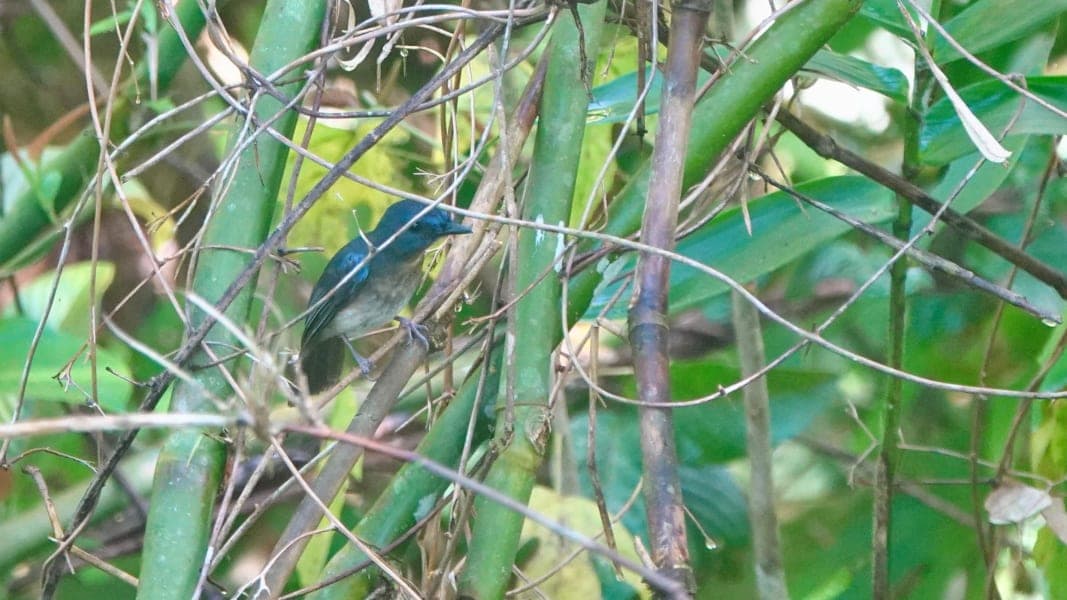Search for Lost Birds / 26 Mar 2025 / Rufous-breasted Blue Flycatcher
On March 9, 2025, Martin Kennewell was enjoying some birding and butterfly spotting near the southern boundary of Caramoan National Park, in south-eastern Luzon island, Philippines. Originally from England, Kennewell retired to the Philippines several years ago and works as guide for Birdtour Asia. An experienced birder, Kennewell knew that on that particular morning he was in the range of a species that very few people had ever seen, the Rufous-breasted Blue Flycatcher. He decided to take a chance and try playing a song of the Blue-breasted Blue Flycatcher, a bird closely related to Rufous-breasted. He did not know what a Rufous-breasted Blue Flycatcher sounded like (there are no known recordings of the species), but an educated guess was that it might sound like its closest relative. At the very least, it seemed worth a try. To Kennewell’s amazement the song elicited a response and moments later a male Rufous-breasted Blue Flycatcher was peering at him curiously through the forest understory. He quickly snapped a series of photographs. It was the first documented record of the flycatcher since 2008, and likely the first-ever photographs of a Rufous-breasted Blue Flycatcher perched in its natural environment. (The image above is the very first in the series.)
Rufous-breasted Blue Flycatchers are found only on Luzon’s south-eastern peninsula. In the central and northern parts of Luzon, similar habitats are occupied by Blue-breasted Blue Flycatchers. The two birds were long considered to be a single species, “Blue-breasted Flycatcher,” but recent taxonomic revisions have recognized them as distinct. (This split was made by Handbook of the Birds of the World/BirdLife in 2016, and by eBird in 2022). While Blue-breasted Blue Flycatchers are encountered fairly regularly at several sites in northern Luzon, the split left Rufous-breasted as a mystery and a Lost Bird. Prior to Kennewell’s encounter, the last documented record of a Rufous-breasted Blue Flycatcher was a female photographed in the hand in June 2008 by Peter Hosner, likely the only other photographs ever taken of the species. Following Hosner’s record, Rob Hutchinson and Bram Demeulemeeseter saw the species in April 2017, but were not able to document it.
Kennewell’s confirmation of the flycatcher near a national park may be good news. The species is currently considered Vulnerable on the IUCN Red List, and is primarily threatened by habitat loss due to deforestation and mining on Luzon.
The details of Kennewell’s observation together with his photos will be published as an in-depth article in the June issue of BirdingASIA from the Oriental Bird Club. Kennewell plans to share a detailed blog about his experience on the Search for Lost Birds website and upload his photos to eBird and iNaturalist when the article comes out.
“I hope this sighting encourages other birders to look for the flycatcher and add more documentation of it including the first sound recordings,” said Kennewell.
Rufous-breasted Blue Flycatcher is the first Lost Bird to be found during 2025, let’s hope others follow!
